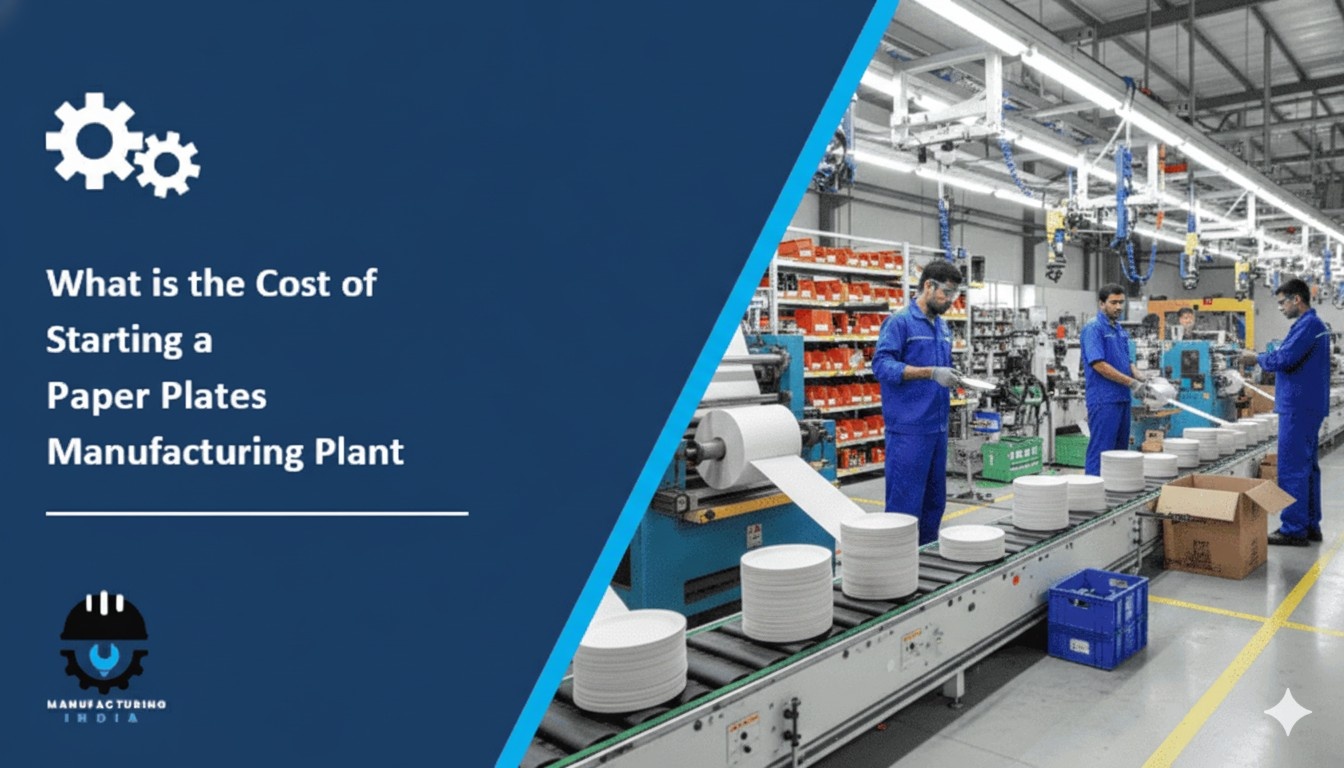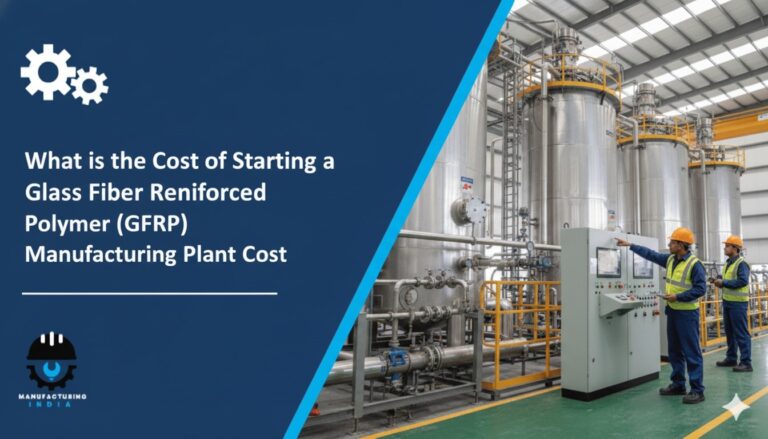
The paper plates manufacturing industry forms the backbone of the global disposable tableware and food packaging sector, which serves various segments from individual consumers to commercial food service providers. Therefore, with constant growth in food delivery services, quick-service restaurants, and hygiene-conscious consumption patterns, establishing a paper plates manufacturing plant presents a promising business opportunity.
The paper plates manufacturing industry is a dynamic and moderately capital-intensive industry with great potential for new entrants. However, this venture requires careful planning, significant investment, and compliance with food safety regulations. From raw material sourcing to quality standards, every phase of the business is to be conducted with utmost precision. Businesses can streamline this process by leveraging on-demand professional resources, which provide feasibility analysis, cost estimations, and requirements for technical necessities.
Step-by-Step Guide to Setup Paper Plates Manufacturing Facility
Step 1: Conducting Market Research and Feasibility Study
Analyzing the Market:
- Beyond traditional business segments such as plain white and printed paper plates, enterprises should consider emerging and upcoming trends. For example, demand for eco-friendly biodegradable plates with compostable coatings is soaring, and firms have come up with dedicated product lines featuring plant-based materials and sustainable sourcing.
- Another aspect is sustainability, where the demand for chemical-free manufacturing processes and food-grade certified materials is rising. Several leading brands have announced initiatives for transitioning to recycled paper usage in production facilities and partnering with certified composting programs.
- Analyze the strategies and product innovations offered by significant disposable tableware manufacturers in the market. For instance, advanced lamination techniques are designed for maximizing plate strength and oil resistance. These use sophisticated multi-layer coating processes to achieve superior performance and leak protection.
- Businesses need to monitor industry shifts, consumer preferences, and regulatory developments constantly to gain a competitive edge. Expert insights can help enterprises stay informed about market trends, competitor strategies, and innovation landscapes. Companies can make data-driven decisions to enhance their market positioning and drive sustainable growth by using tailored research.
- A robust study is essential, and businesses should also consider regional factors. For instance, a plant in urban areas might focus on premium designer plates due to market preferences, while a rural market plant might cater to affordable, bulk-order models and extended distribution networks.
- Estimate the capital needed for land acquisition, infrastructure development, machinery, working capital, and product development. Recent investments in the sustainable packaging sector highlight the significant financial commitments involved in this industry.
Step 2: Business Plan Development
Include a comprehensive financial model, considering initial investment and operating costs. Address sustainability initiatives, which can attract investors and customers. For instance, leading companies are working towards goals of reducing environmental impact through use of renewable energy and sustainable manufacturing practices. Many have targeted achieving zero-waste operations as part of their long-term environmental vision.
- Business Model: Businesses should plan whether to focus on manufacturing standard paper plates, specialized compartment plates, printed custom designs, private labeling, contract manufacturing, or a combination of these approaches and build a business model accordingly.
- Funding Strategy: Outline potential funding sources, including equity investment, bank loans, government grants for small-scale industries, or strategic partnerships with food service companies.
- Production Capacity: Define your target production volume based on market analysis and available resources, considering whether to start with small-scale operations or aim for large-scale production.
- Marketing and Sales Strategy: Develop plans for branding, distribution channels including wholesalers, direct supply to restaurants, e-commerce platforms, and retail partnerships, and customer acquisition through trade shows and B2B marketing.
- Risk Assessment: Identify potential risks, such as raw material price fluctuations, supply chain disruptions for paper pulp, regulatory changes in food packaging policies, or challenges in quality consistency, and propose mitigation strategies.
Step 3: Navigating Legal Requirements and Obtaining Necessary Permits
Compliance with legal and regulatory frameworks is essential. Key steps include:
- Business Registration: Register your company in accordance with local laws and manufacturing regulations.
- Food Safety Approvals: Obtain necessary food-grade certifications, as paper plate manufacturing involves strict safety standards and quality control that must meet regulatory requirements for food contact materials.
- Factory Licenses: Secure licenses required for operating a manufacturing facility, including environmental department approvals and pollution control clearances.
- Material Safety Certifications: Aim for certifications related to food-grade paper handling, ink and coating safety standards, and quality management system approvals to ensure product safety and facilitate market acceptance.
- Quality Certifications: Obtain certifications such as ISO standards for quality management, food packaging industry specific certifications, and testing facility approvals for product validation.
Step 4: Selecting an Optimal Location and Develop Infrastructure
Choosing the right location is critical for operational efficiency. Consider factors such as:
- Proximity to Raw Materials: Access to paper pulp suppliers, coating material manufacturers, printing ink suppliers, and packaging material facilities. Proximity to paper mills reduces transportation costs and lead times.
- Logistics and Transportation: Ensure good connectivity to key markets, suppliers, and distribution centers. Access to highways, railways, and freight services is essential for distributing finished products and receiving raw materials.
- Utilities Availability: Reliable access to electricity for manufacturing operations, high-quality water for production processes, compressed air systems, and adequate space for quality testing facilities.
- Land Size: Adequate space to accommodate current operations including production areas, die storage rooms, quality control laboratories, raw material warehouses, finished goods storage sections, and future expansions for increased capacity.
Step 5: Procuring Advanced Machinery and Quality Raw Materials
Investing in state-of-the-art machinery ensures efficient production and high-quality output. Essential equipment includes:
- Plate Forming Equipment: Hydraulic or pneumatic paper plate making machines for pressing and forming, automatic die-cutting machines for various sizes, heat sealing equipment for laminated plates, and embossing machines for texture.
- Printing Systems: Flexographic printing machines for custom designs, UV coating equipment for glossy finishes, screen printing setups for specialized orders.
- Raw Material Processing: Paper roll cutting machines, lamination equipment for coating application, drying ovens or tunnels.
- Quality Control Equipment: Weight measurement systems, thickness gauges, leak testing equipment, compression strength testers, microwave and oven resistance testing chambers.
- Packaging Equipment: Automated counting and stacking systems, shrink wrapping machines, carton sealing equipment, labeling systems.
Raw Material Requirements:
Source quality materials from reliable suppliers, including food-grade paper board in various GSM ratings, biodegradable coating materials, food-safe printing inks, lamination films, packaging cartons and poly bags, and appropriate protective materials that ensure product hygiene during storage and transportation.
Step 6: Building a Skilled Workforce
Recruiting and training skilled personnel is vital. Key roles include:
- Production managers and technical supervisors for overseeing production processes, optimizing machine settings, quality parameters, and maintaining equipment efficiency.
- Quality control specialists to ensure products meet food safety standards and performance specifications.
- R&D team for developing new designs, improving coating formulations, and creating innovative product features.
- Sales and marketing professionals to drive market penetration, distributor network development, brand recognition, and B2B relationships.
- Regulatory compliance officers to ensure adherence to food packaging regulations and certification requirements.
- Production line workers and technicians trained in machine operation, die changing, quality inspection procedures, and material handling.
Companies with strong reputations in the food packaging industry have established comprehensive training programs to develop skilled workers, contributing to their reputation for quality and consistency.
Step 7: Implementing the Production Process
The paper plates manufacturing process involves multiple stages, which include:
- Design and Engineering: Plate design specifications, die engineering, coating formulation planning, printing artwork preparation, and prototype development with performance validation.
- Material Procurement and Quality Inspection: Receiving raw materials from suppliers and conducting incoming quality control checks including paper quality testing, coating material verification, and ink sample validation.
- Material Preparation: Paper roll cutting to required dimensions, conditioning in temperature and humidity-controlled environments, material feeding to production lines.
- Forming Process: Loading paper sheets into forming machines, hydraulic or pneumatic pressing with heated dies, shape formation and edge trimming, and structural integrity checks.
- Coating Application: Lamination process for water and oil resistance, coating curing in drying chambers, quality inspection for uniform coverage.
- Printing Operations: Design printing using flexographic or screen printing methods, color matching and registration verification, UV coating application if required, drying and curing processes.
- Quality Inspection: Finished plates undergo rigorous quality checks including visual inspection for defects, dimensional accuracy verification, leak testing with liquids, strength and rigidity testing, coating adhesion evaluation, food safety compliance verification, and final approval process.
- Packaging and Distribution: Approved products are counted and stacked, packed in poly bags with proper quantities, placed in master cartons with documentation including product specifications, batch codes for traceability, and shipped to distributors, retailers, or customers.
Step 8: Establishing Marketing and Distribution Channels
A robust marketing and distribution strategy is essential for establishing a strong presence in the market. Consider the following approaches:
- Distributor Network Development: Collaborate with regional distributors, establish wholesale partnerships, and create authorized dealer networks to ensure widespread product availability and market reach.
- E-commerce Channels: Utilize both your own website and online marketplace platforms to reach customers directly. Develop comprehensive digital marketing campaigns, leverage social media for brand awareness, and create educational content about product features and sustainability benefits.
- Food Service Partnerships: Form alliances with restaurant chains, catering companies, cloud kitchen operators, and food delivery platforms to secure bulk orders and build credibility in the commercial segment.
- B2B Opportunities: Supply paper plates to other brands through white-labeling or private label arrangements, partner with event management companies, or collaborate with institutional buyers like schools and hospitals.
- Export Opportunities: Study international markets with growing disposable tableware demand and comply with their specific regulatory requirements, food safety standards, and packaging specifications for successful market entry.
Step 9: Ensuring Compliance with Safety and Environmental Standards
Paper plates manufacturing involves strict food safety protocols and environmental considerations, making regulatory compliance crucial. Key measures include:
- Worker Safety: Implement strict safety protocols for machine operation, provide personal protective equipment including safety gear for handling chemicals and operating machinery, and train employees on fire safety, chemical handling, and workplace hazards.
- Material Handling and Storage: Establish proper protocols for paper storage in moisture-controlled environments, implement fire prevention systems, maintain appropriate warehouse conditions, and train staff on emergency response procedures.
- Waste Management: Establish proper recycling systems for paper waste and scrap material recovery programs, manage coating waste and chemical disposal, handle printing ink waste according to regulations, and implement packaging waste recycling.
- Emissions Control: Install air pollution control systems for coating and drying processes, implement proper ventilation systems throughout the facility, and monitor environmental emissions to comply with local regulations.
- Energy Efficiency: Adopt energy-efficient manufacturing equipment, implement heat recovery systems from drying ovens, consider renewable energy sources like solar panels to reduce operational costs and environmental footprint.
Governments and regulatory bodies worldwide are increasingly enforcing stringent food packaging and environmental regulations. Leading packaging companies have pledged to reduce their environmental impact by adopting sustainable manufacturing practices and biodegradable material usage.
Step 10: Planning for Future Expansion and Innovation
Once the paper plates plant is fully operational, focus on scaling up production and expanding market reach. Key strategies include:
- Increasing Production Capacity: Expand facilities by adding production lines, upgrade to higher-capacity automated equipment, or establish additional manufacturing facilities in different regions to meet growing market demand.
- Launching New Products: Invest in research and development to create innovative products, such as compartment plates, designer printed plates, specialty sizes for specific applications, or eco-premium product lines.
- Diversification: Explore new markets such as paper cups, food containers, paper bowls, takeaway packaging, or entry into other biodegradable tableware segments.
- Technology Integration: Develop advanced features like antimicrobial coatings, enhanced barrier properties for hot and cold foods, innovative folding designs, improved bio-degradability formulations, or smart packaging with QR codes for traceability.
- Vertical Integration: Consider backward integration by setting up paper pulp processing, coating material production, or printing ink manufacturing to reduce dependency on suppliers and improve margins.
- Strategic Partnerships: Consider collaborations with food service chains, packaging distributors, e-commerce platforms for exclusive supply agreements, or event management companies to strengthen market presence.



